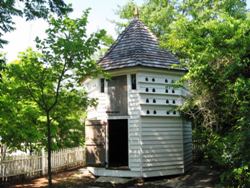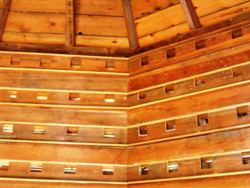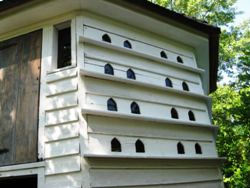Next Council Meeting
 The Official Web Site of the State of South Carolina
The Official Web Site of the State of South Carolina
Lexington County administrative offices are open Monday through Friday 8 AM to 5 PM
One of the most unusual structures at the Lexington County Museum is the Wadlington Pigeon House, also called a pigeonaire. Built in 1857, the Pigeon House was originally located on the  Oak Grove Plantation in present day Newberry County, about ten miles from the old Lexington County line. The Wadlington Pigeon House, whose design probably came from a pattern book, is a rare example of Octagonal ornamental architecture, which was popular in the 1850s. Only one other pigeon house from the antebellum period is known to still exist in South Carolina.
Oak Grove Plantation in present day Newberry County, about ten miles from the old Lexington County line. The Wadlington Pigeon House, whose design probably came from a pattern book, is a rare example of Octagonal ornamental architecture, which was popular in the 1850s. Only one other pigeon house from the antebellum period is known to still exist in South Carolina.
Pigeon houses were found on most farms and plantations in Lexington County until the 1920s. The owners used the pigeons for food due to the fact that they required little care, foraged for food themselves, and grew to an edible size in around 28 days. Compared to chickens, pigeons were much easier to care for and could be eaten much sooner. Furthermore, they are protected from predators in the house and produce droppings that make an excellent fertilizer.
The Pigeon House at the Lexington County Museum would have held 55 pairs of breeding birds and featured 112 access holes. The roof of the Wadlington pigeonaire is sharply pitched to discourage the pigeons from sitting upon (and fouling) the wooden shingles. This roof may have also helped regulate the temperature inside. The Wadlington Pigeon House was moved to the Lexington County Museum and restored in 2005 after many years of neglect.

